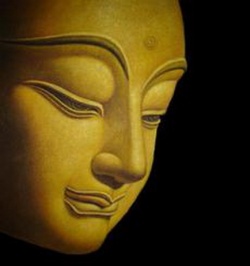Difference between revisions of "Inner air"
| Line 16: | Line 16: | ||
There are [[five root winds|five root]] and [[five branch winds]]. | There are [[five root winds|five root]] and [[five branch winds]]. | ||
| − | The [[winds]] that flow through all the channels except the central one are said to be impure and activate negative, [[dualistic]] [[thought]] patterns; the [[winds]] in the [[central channel]] are called "[[wisdom winds]]". | + | The [[winds]] that flow through all the [[channels]] except the central one are said to be impure and activate negative, [[dualistic]] [[thought]] patterns; the [[winds]] in the [[central channel]] are called "[[wisdom winds]]". |
| Line 47: | Line 47: | ||
{{reflist}} | {{reflist}} | ||
| − | + | [[Category:Rlung]] | |
[[Category:Psycho-physical System]] | [[Category:Psycho-physical System]] | ||
{{RigpaWiki}} | {{RigpaWiki}} | ||
Latest revision as of 08:53, 21 February 2017
The term inner air or lung (Wyl. rlung; Skt. prāṇa), refers to the 'wind-energies' or 'psychic winds' that travel through the subtle channels or tsa of the body's psycho-physical system, as outlined in the Tibetan Buddhist tantras.
There are five root and five branch winds.
The winds that flow through all the channels except the central one are said to be impure and activate negative, dualistic thought patterns; the winds in the central channel are called "wisdom winds".
The Five Root or Major Winds
Each of the root winds supports an element and is responsible for a function of the human body. They are:
- The 'life-supporting wind' (Tib. sok dzin lung; Wyl. srog 'dzin rlung). Located in the brain, this lung regulates functions such as swallowing, inhalation, and concentration.
- The 'upward-moving wind' (Tib.gyengyu lung; Wyl. gyen rgyu rlung). Located in the chest and thorax, this lung regulates, among other things, speech, the body's energy and vitality, memory, mental endeavour and diligence.
- The 'all-pervading wind' (Tib. khyap ché lung; Wyl. khyab byed rlung). Residing in the heart, this lung controls all the motor activities of the body.
- The 'fire-accompanying wind' (Tib. me nyam né lung; Wyl. me mnyam gnas rlung). Found in the stomach and abdomen area, the fire-accompanying wind regulates digestion and metabolism.
- The 'downward-clearing wind' (Tib. thursel lung; Wyl. thur sel rlung). Located in the rectum, bowels and perineal region, this lung's function is to expel faeces, urine, semen, and menstrual blood. It also regulates uterine contractions during labour (to allow the foetus to be 'expelled')[1].
The Five Branch Winds
The five branch winds enable the senses to operate. They are:
- The naga wind (Tib. lu'i lung; Wyl. klu'i rlung). This lung is connected with the eyes and sight.
- The tortoise wind (Tib. rubal gyi lung; Wyl. ru sbal gyi rlung). This wind connects with the heart and the sense of hearing [check].
- The lizard wind (Tib. tsangpé lung; Wyl. rtsangs pa'i rlung) — associated with the nose and the sense of smell.
- The devadatta wind (Tib. lhéjin gyi lung; Wyl. lhas byin gyi rlung) — related to the sense of taste [check].
- The 'king of wealth deities' wind (Tib. nor lha gyal gyi lung; Wyl. nor lha rgyal gyi rlung). This wind connects with the body and the sense of touch.
Lung 'Disorder'
The type of lung that is associated with what is colloquially called 'lung disease' or 'lung disorder' is the 'upward-moving lung' or gyengyu, one of the five types of root wind.
Tsoknyi Rinpoche teaches that this lung ideally resides four finger-widths below the navel, but travels upwards into the chest and brain when agitated.
Teachings on Lung 'Disorder'
- Tsoknyi Rinpoche, Lerab Ling, 26 July, 2007
- Tsoknyi Rinpoche, Lerab Ling, 20 July, 2008
